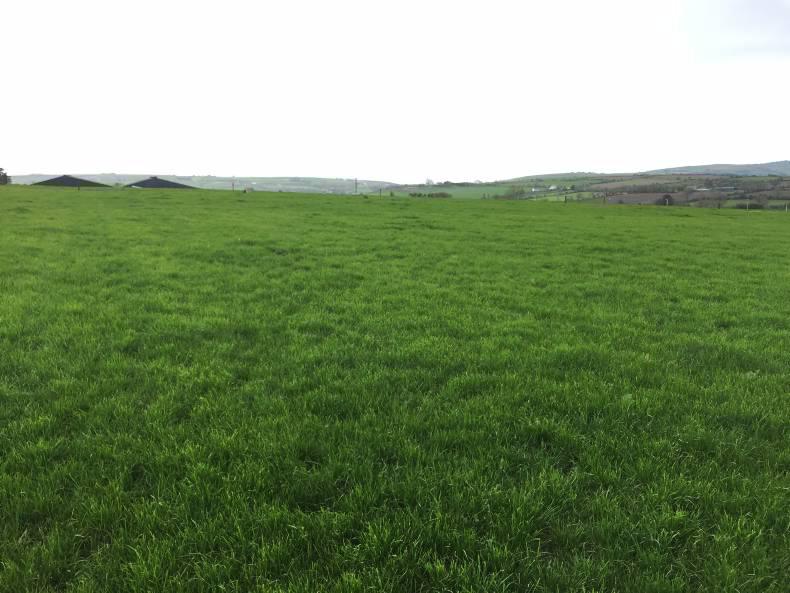The weekend just gone had everything dairy farmers could ask for – moisture (a bit too much on Saturday), heat and sunlight. These conditions are ideal for grass growth and while we might have hoped that these conditions would have come a month ago, we should manage this increase in growth now to the best of our abilities and for the betterment of our wallets.
The mistake made at this time of year is to let the cows graze paddocks that are gone too strong. I am already seeing examples of this happening. Growth rates are very high at present.
I expect some farms are going to average close to 100kg per day over the past week. This means that half the farm is growing over 100kg per day and, on some days, some paddocks could be growing in excess of 150kg per day.
These paddocks are likely to be the ones closest to grazing as they have the highest covers and are already at the three-leaf stage.
What are the options?
The consequences of letting grass get too strong are severe and long-lasting. Milk yield and milk protein will decrease immediately but it will also be lower in the next round as achieving a good clean-out on a high cover is impossible. Remember, stem is the enemy of protein.
So, what are the options? Obviously, doing a full grass walk twice a week when growth is as high as it is now is the gold-star approach to grass management. Other than this, doing a partial grass walk of the next four or five paddocks and calculating how many days’ grazing is in each paddock is not a bad way of doing things. Doing nothing is not an option.
Normal rules apply
Of course, you need to know what the ideal pre-grazing yield is. Every farmer says it is between 1,300kg and 1,600kg, but nine times out of 10 what someone thinks is a cover of 1,600kg is actually more like 2,000kg and is laden with stem.
Any sward with white grass at the base is too strong for grazing and should be skipped over for silage. Pre-mowing is not a solution. This doesn’t kill stem.
Normal rules apply. Set your grass demand at 65kg to 70kg by closing up ground for first-cut silage. Any surplus grass that comes on top of this should be cut for bale silage and returned to the grazing area as soon as possible so the demand will stay below 70kg per day or just above 4.1 cows/ha, which requires a pre-grazing yield of 1,450kg to sustain a 21-day round length.
Read more
10 steps to dealing with a grass shortage
The dos and don’ts of wet spring weather management
The weekend just gone had everything dairy farmers could ask for – moisture (a bit too much on Saturday), heat and sunlight. These conditions are ideal for grass growth and while we might have hoped that these conditions would have come a month ago, we should manage this increase in growth now to the best of our abilities and for the betterment of our wallets.
The mistake made at this time of year is to let the cows graze paddocks that are gone too strong. I am already seeing examples of this happening. Growth rates are very high at present.
I expect some farms are going to average close to 100kg per day over the past week. This means that half the farm is growing over 100kg per day and, on some days, some paddocks could be growing in excess of 150kg per day.
These paddocks are likely to be the ones closest to grazing as they have the highest covers and are already at the three-leaf stage.
What are the options?
The consequences of letting grass get too strong are severe and long-lasting. Milk yield and milk protein will decrease immediately but it will also be lower in the next round as achieving a good clean-out on a high cover is impossible. Remember, stem is the enemy of protein.
So, what are the options? Obviously, doing a full grass walk twice a week when growth is as high as it is now is the gold-star approach to grass management. Other than this, doing a partial grass walk of the next four or five paddocks and calculating how many days’ grazing is in each paddock is not a bad way of doing things. Doing nothing is not an option.
Normal rules apply
Of course, you need to know what the ideal pre-grazing yield is. Every farmer says it is between 1,300kg and 1,600kg, but nine times out of 10 what someone thinks is a cover of 1,600kg is actually more like 2,000kg and is laden with stem.
Any sward with white grass at the base is too strong for grazing and should be skipped over for silage. Pre-mowing is not a solution. This doesn’t kill stem.
Normal rules apply. Set your grass demand at 65kg to 70kg by closing up ground for first-cut silage. Any surplus grass that comes on top of this should be cut for bale silage and returned to the grazing area as soon as possible so the demand will stay below 70kg per day or just above 4.1 cows/ha, which requires a pre-grazing yield of 1,450kg to sustain a 21-day round length.
Read more
10 steps to dealing with a grass shortage
The dos and don’ts of wet spring weather management






 This is a subscriber-only article
This is a subscriber-only article










SHARING OPTIONS: